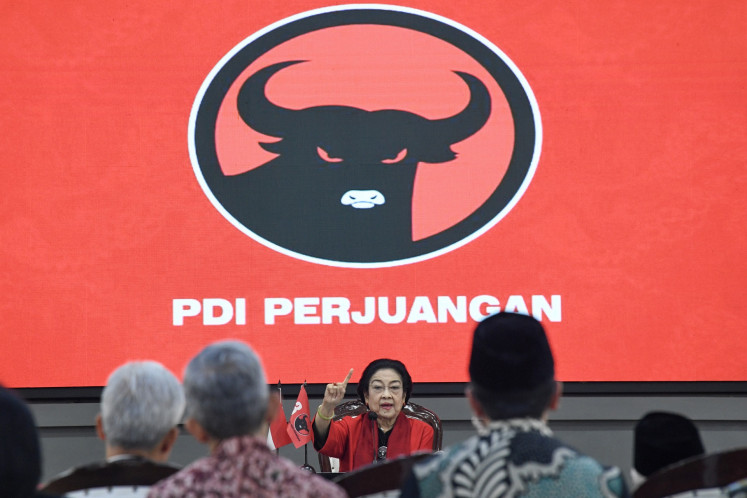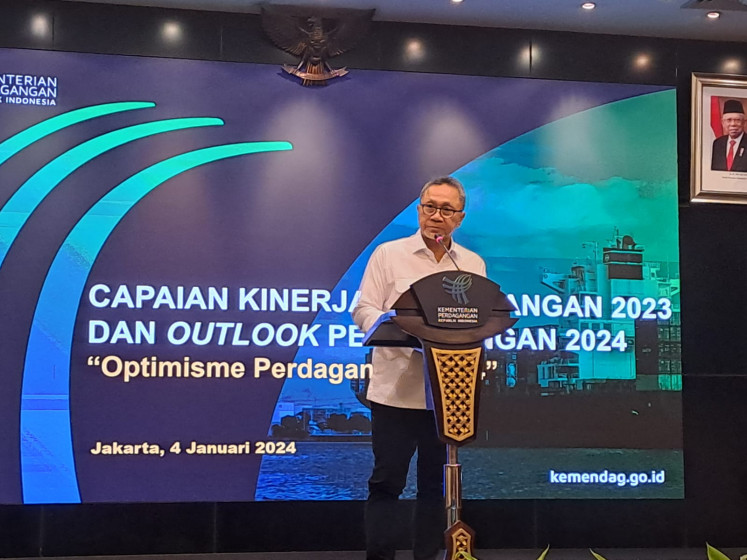Govt urged to save filthy Citarum River
Greenpeace has called on the government to take immediate action to prevent the ongoing environmental degradation of West Java’s severely polluted Citarum River
Change Size

G
reenpeace has called on the government to take immediate action to prevent the ongoing environmental degradation of West Java’s severely polluted Citarum River.
The river is a major source of drinking water for Jakarta.
Greenpeace Southeast Asia campaigner Ahmad Ashov Birry said the government should take firm action to stop industries dumping chemical waste into the river.
A survey conducted by research institution LP3ES showed that 81 percent of the 400 respondents surveyed said industries must stop polluting Citarum River.
The survey was launched by Greenpeace and Citarum River Basin Area Working Group as part of a program to raise awareness about the degradation of the river, called “Let’s Seize Back Citarum, Our Pulse”.
The event took place on a boat cruise on the river near Parunghalang village in Baleendah district, Bandung regency, on Tuesday.
Environmentalists, together with local residents, took samples of water from the river using glass jars to show its turbidity.
Ashov said the survey showed that 79.8 percent of the residents of 20 villages on the river believed the river was being polluted by industrial waste and 92.3 percent of the respondents believed that hazardous chemicals from industrial waste damaged the environment.
“We hope the campaign can inspire people and motivate us to seek a solution to save Citarum River from pollution, the impacts of which are hazardous to our health, the environment and wildlife,” Ashov told reporters in Bandung on Tuesday.
Citarum River supplies fresh water to the majority of people in West Java and around 80 percent of residents in Jakarta. The river was judged to be the dirtiest river in the world in 2007.
An incredible 20 percent of all of Indonesia’s industry is located along the Citarum River. Thousands of factories dump toxic waste into the river, which flows from the slopes of Mount Wayang in Bandung regency.
Textile factories in Bandung and Cimahi and Bandung and West Bandung are major contributors of the toxic waste.
A report about the river released in March 2010 said that 280 tons of inorganic chemical waste originating from thousands of factories in Bandung regency, from Majalaya, Banjaran, Rancaekek, Dayeuhkolot, Ujungberung, Cimahi, Padalarang, was dumped into the river every year.
Most of the pollution is believed to originate from industries near the river’s source.
Deni Riswandhini from Citarum PKK DAS said the river was facing complex problems.
Besides pollution, damage to the green-belt in the areas near the river’s source, and the river banks had caused soil degradation, erosion, sedimentation and floods due to large-scale forest conversion for industry and housing.
“We recommend a reform of the spatial planning policy, reconstruction of watershed areas, critical
land rehabilitation in the upstream area and firm law enforcement,” Deni said.
Many local environmental groups have expressed skepticism about a government-initiated project to rehabilitate the river that used 7.8 billion yen in foreign aid from 1994 to 2007. The project was aimed at widening and dredging the river.
The amount of sediment in the river was reported to have reached 2 million cubic meters, but flooding has worsened the condition of the river and reduced its ability to hold rain water.
Former West Java Forestry Office head Anang Sudarna previously said it was difficult to restore the watershed areas in the upper reaches of the river because a large section of the land was privately owned.
A report showed that 78 percent of river’s 718,269-hectare basin area consisted of community forests cultivated by local people.









